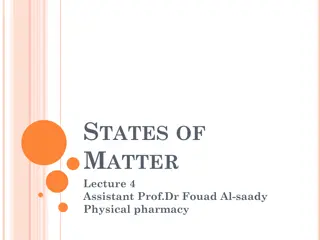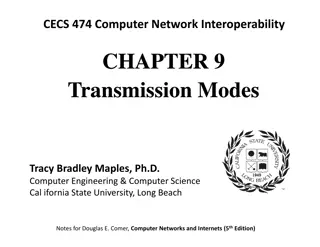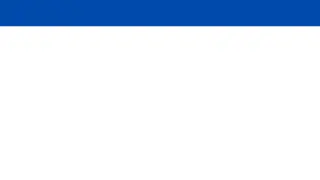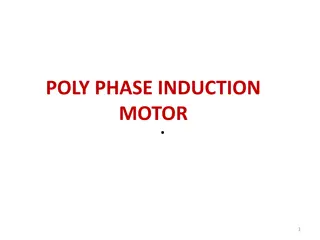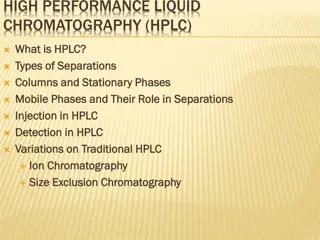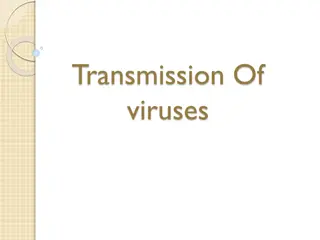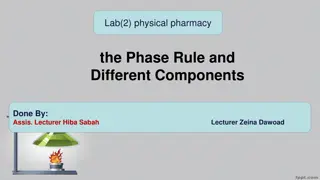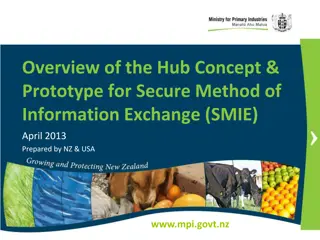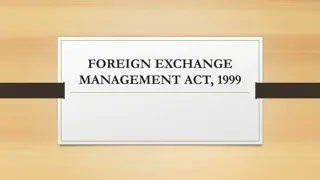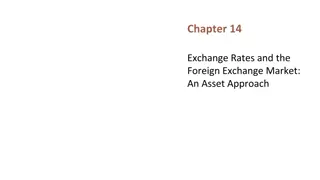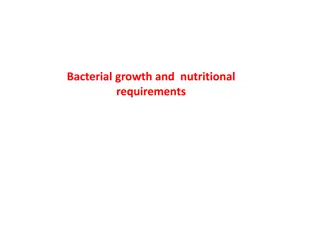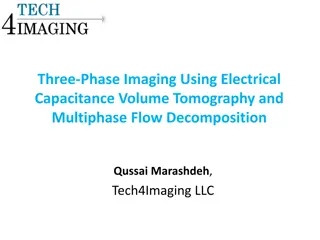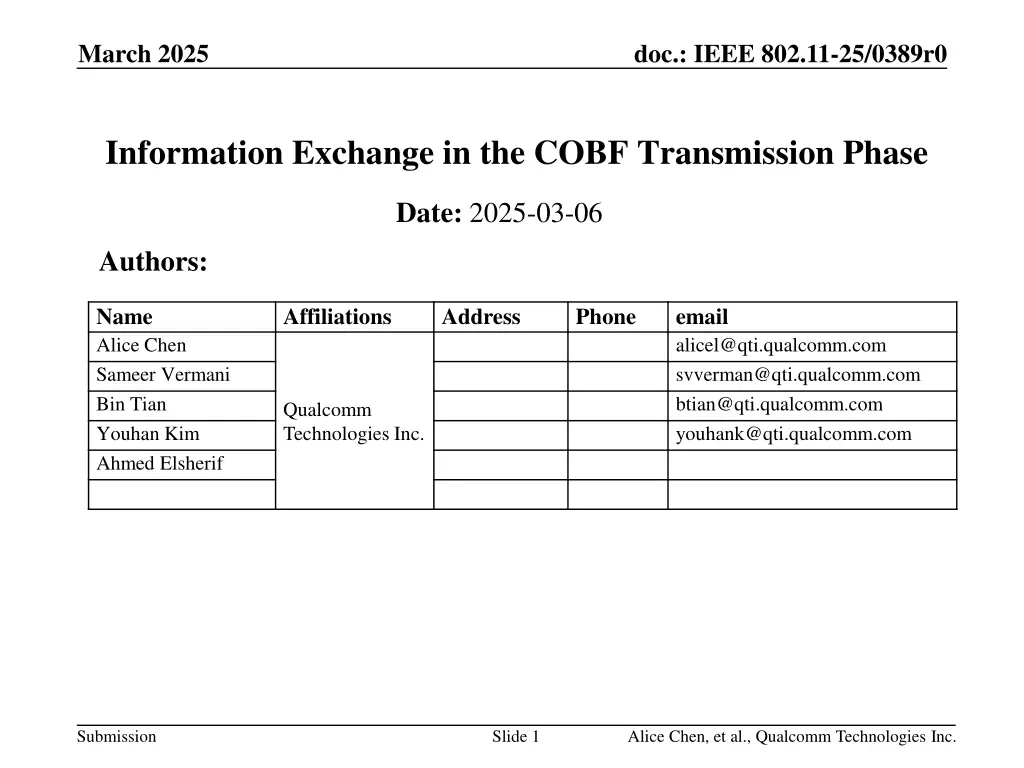
Information Exchange in COBF Transmission Phase IEEE 802.11-25/0389r0
Explore the concept of information exchange in the Coordinated Beamforming (COBF) transmission phase within IEEE 802.11-25/0389r0. The discussion revolves around the frames involved, such as CoBF Invite, Response, and Sync frames, aiming to negotiate parameters and establish a common preamble. Essential and non-essential information, time/frequency resource bandwidth, and punctured channel details are key elements highlighted in this technical discussion by Qualcomm Technologies Inc.
Download Presentation

Please find below an Image/Link to download the presentation.
The content on the website is provided AS IS for your information and personal use only. It may not be sold, licensed, or shared on other websites without obtaining consent from the author. If you encounter any issues during the download, it is possible that the publisher has removed the file from their server.
You are allowed to download the files provided on this website for personal or commercial use, subject to the condition that they are used lawfully. All files are the property of their respective owners.
The content on the website is provided AS IS for your information and personal use only. It may not be sold, licensed, or shared on other websites without obtaining consent from the author.
E N D
Presentation Transcript
March 2025 doc.: IEEE 802.11-25/0389r0 Information Exchange in the COBF Transmission Phase Date: 2025-03-06 Authors: Name Alice Chen Sameer Vermani Bin Tian Youhan Kim Ahmed Elsherif Affiliations Address Phone email alicel@qti.qualcomm.com svverman@qti.qualcomm.com btian@qti.qualcomm.com youhank@qti.qualcomm.com Qualcomm Technologies Inc. Submission Slide 1 Alice Chen, et al., Qualcomm Technologies Inc.
March 2025 doc.: IEEE 802.11-25/0389r0 Introduction Per MAC sequence, conceptually there will be three frames, i.e., the CoBF Invite, Response and Sync frames [1] for information exchange between the sharing and shared APs in the CoBF transmission phase CoBF Invite/Sync: sent from the sharing AP to the shared AP CoBF Response: sent from the shared AP to the sharing AP Information exchange between two APs through these three frames to negotiate parameters and form the common preamble in CoBF transmission should be self-contained In this presentation, we discuss the information exchange in the transmission phase, with the focus on PHY information Submission Slide 2 Alice Chen, et al., Qualcomm Technologies Inc.
February 2025 doc.: IEEE 802.11-25/0389r0 Two Types of Information Two types of information will be signaled Subfields in the common preamble (also called PHY info ) Essential info: Parameters which are essential to pre-transmission negotiation Non-essential info: Parameters which are either pre-defined or derived from essential info Focus our discussion mostly on the essential info Basic control information Each frame needs to indicate what it is ( CoBF Invite / CoBF Acceptance / CoBF Rejection / CoBF Sync ) How to indicate this info is TBD Submission Slide 3 Alice Chen, et al., Qualcomm Technologies Inc.
February 2025 doc.: IEEE 802.11-25/0389r0 Time/Frequency Resource Bandwidth and Punctured Channel Information should be indicated in the Invite frame Shared AP needs BW info for scheduling users of different BW capabilities To be self-contained, also include the Punctured Channel Information No bandwidth or punctured pattern negotiation allowed Range of data field indication and negotiation, as discussed in [1] Range of data field should be indicated in the Invite frame Minimum Number of Data OFDM Symbols (9 bits) Maximum Number of Data OFDM Symbols (9 bits) Suggested data field duration should be indicated in the Response frame Suggested Number of Data OFDM Symbols (9 bits) Suggest to fix the LDPC Extra Symbol Segment to 1 (for lower puncturing ratio) and fix the common pre-FEC padding factor to 4 (for largest payload for a given number of Data OFDM Symbols) Submission Slide 4 Alice Chen, et al., Qualcomm Technologies Inc.
February 2025 doc.: IEEE 802.11-25/0389r0 Number of UHR-LTF Symbols Number of UHR-LTF Symbols In the Invite frame, the sharing AP indicates the per-user Nss in the sharing BSS and the Maximum Total Nss Allowed for shared AP (2 bits) In the Response frame, the shared AP indicates the per-user Nss in the shared BSS and Extra LTF Allowed or not in the shared BSS In the Sync frame, the sharing AP determines the final Number of UHR-LTF Symbols and indicates it The following table shows all possible cases BSS1 or BSS2 may be sharing or shared BSS Total Nss in BSS1 Total Nss in BSS2 Nss,total Minimum N_LTF N_LTF with Extra LTF 1 1 2 1 2 3 1 3 4 2 2 4 2 4 4 4 4 8 8 8 Submission Slide 5 Alice Chen, et al., Qualcomm Technologies Inc.
February 2025 doc.: IEEE 802.11-25/0389r0 User Info Per-user MCS Sharing AP can t determine the per-user MCS for its users at the time of the Invite frame, without knowing the number of spatial streams from the shared AP Shared AP determines and indicates the per-user MCS for its users in the Response frame, with the full knowledge of STA selection and per-user Nss across two BSSs Sharing AP finally determines the per-user MCS for its users after the Response frame and indicates the info in the Sync frame Per-user 2xLDPC: Suggest to let each AP decides for its users A local rate adaptation decision at each AP Shared AP indicates the 2xLDPC bit for its users in the Response frame Sharing AP indicates the 2xLDPC bit for its users in the Sync frame Submission Slide 6 Alice Chen, et al., Qualcomm Technologies Inc.
February 2025 doc.: IEEE 802.11-25/0389r0 User Field Ordering User field ordering In each of the Invite/Response frame: If there is information for more than one users, suggest to order the users according to Nss in non-increasing order In the Sync frame: For ease of copy and paste , suggest to include the information of all users across two BSSs Suggest to order the users in the same order as in the UHR-SIG field in the CoBF transmission Note that the final user field ordering is according to Nss in non-increasing order (due to the design of the Spatial Configuration subfield) while keeping the user fields belong to the same BSS contiguous [2] In the case where the user fields of either BSS may go first, suggest that the user fields of the sharing BSS go first Submission Slide 7 Alice Chen, et al., Qualcomm Technologies Inc.
February 2025 doc.: IEEE 802.11-25/0389r0 Info with Fixed Values UHR-SIG MCS: Suggest to fix it to MCS0 Spatial Reuse (SR): Suggest to fix it to PSR_AND_NON_SRG_OBSS_PD_PROHIBITED Interference Mitigation (IM): Suggest to fix it to Disable PE Disambiguity As in [4, 5], with a fixed T_PE=20us, the PE Disambiguity becomes a fixed value of 1 according to the following Submission Slide 8 Alice Chen, et al., Qualcomm Technologies Inc.
February 2025 doc.: IEEE 802.11-25/0389r0 Other Discussion Non-essential info that uses fixed values doesn t need to be signaled UL/DL, PPDU Type And Compression Mode, CoBF/CoSR Indication, UHR-SIG MCS, SR, IM, LDPC Extra Symbol Segment, Pre-FEC Padding Factor, PE Disambiguity Suggest to signal the following TXOP dependent info (including both essential and non-essential but derivable info) in the Sync frame for ease of direct copy and paste BSS Colors, TXOP, Number of UHR-SIG Symbols, Number of CoBF Users Bandwidth, Punctured Channel Information, GI+LTF Size (indicated in the Invite [1]) Info for all users Submission Slide 9 Alice Chen, et al., Qualcomm Technologies Inc.
March 2025 doc.: IEEE 802.11-25/0389r0 Summary of Info Exchange Part 1 Preamble Field/Control Info Carried in CoBF Invite Carried in CoBF Response Carried in CoBF Sync Information / Subfield Category ( CoBF Acceptance') Control Info Information Flag Essential ( CoBF Invite') ( CoBF Sync') Minimum Number of Data OFDM Symbols (9 bits), Maximum Number of Data OFDM Symbols (9 bits) Yes Yes Suggested Number of Data OFDM Symbols (9 bits) L-SIG Length (12 bits) Essential Yes PHY Version Identifier (3 bits) Bandwidth (3 bits) Essential Essential Non-Essential (fixed to 0) Non-Essential Non-Essential Non-Essential (fixed to 2) Non-Essential (fixed to 0) Essential Non-Essential (fixed to MCS0) Non-Essential Yes Yes Yes UL/DL (1 bit) BSS Colors (6 bits each) TXOP (7 bits) Yes Yes PPDU Type And Compression Mode (2 bits) U-SIG CoBF/CoSR Indication (1 bit) Punctured Channel Information (5 bits) Yes Yes UHR-SIG MCS (2 bits) Number of UHR-SIG Symbols (5 bits) Yes Submission Slide 10 Alice Chen, et al., Qualcomm Technologies Inc.
March 2025 doc.: IEEE 802.11-25/0389r0 Summary of Info Exchange Part 2 Preamble Field/Control Info Carried in CoBF Invite Carried in CoBF Response Carried in CoBF Sync Information / Subfield Category Non-Essential ( Disabled ) Essential Spatial Reuse (4 bits) GI+LTF Size (2 bits) Yes Yes Maximum Total Nss at shared AP (2 bits) Extra LTF Allowed (1 bit) Number Of UHR-LTF Symbols (3 bits) Essential Yes Non-Essential (fixed to 1) Non-Essential (fixed to 4) Non-Essential (fixed to 1) Non-Essential ( Disabled ) LDPC Extra Symbol Segment (1 bit) UHR-SIG Common Pre-FEC Padding Factor (2 bits) PE Disambiguity (1 bit) Interference Mitigation (1 bit) Number of CoBF Users served by the sharing AP (2 bits) Yes (for users in sharing BSS) Number of CoBF Users served by the shared AP (2 bits) Yes (for users in shared BSS) Yes (for users in shared BSS) Nss (1 bit) (for users in shared BSS) Number of CoBF Users (i.e., Number of Non- OFDMA Users, 3 bits) Non-Essential Yes STA ID (11 bits) Essential Yes (for all users) MCS (5 bits) Essential Yes (for all users) UHR-SIG User Field Nss (1 bit) (for users in sharing BSS) Spatial Configuration (4 bits) Essential Yes (for all users) BSS Color Indication (1 bit) Non-Essential Yes (for all users) Yes (for users in shared BSS) 2xLDPC (1 bit) Essential Yes (for all users) Submission Slide 11 Alice Chen, et al., Qualcomm Technologies Inc.
March 2025 doc.: IEEE 802.11-25/0389r0 Reference 1. 11-25/381r0, Some open issues on COBF, Sameer Vermani, et al. (Qualcomm) 11-24/1822r4, COBF Design for UHR, Sameer Vermani, et al. (Qualcomm) 11-25/87r0, Co-Triggering Frame Design for CoBF, Insik Jung, et al. (LGE) 11-25/399r0, COBF/COSR Design Follow-up, You-Wei Chen (MediaTek) 11-25/401r0, CoBF PHY design consideration, Juan Fang, et al. (Intel) 11-25/397r0, Spatial Streams Indication for CoBF TF and PPDU, Junghoon Suh, et al. (Huawei) 2. 3. 4. 5. 6. Submission Slide 12 Alice Chen, et al., Qualcomm Technologies Inc.
March 2025 doc.: IEEE 802.11-25/0389r0 SP1 Do you agree to add the following to the 11bn SFD? The CoBF Invite frame carries the following information? How to indicate the information is TBD Category Control CoBF Invite Minimum Number of Data OFDM Symbols Maximum Number of Data OFDM Symbols PHY Version Identifier Bandwidth Punctured Channel Information GI+LTF Size Maximum Total Nss Allowed for shared AP Number of CoBF Users in sharing BSS STA ID Nss PHY Common Info Per-User Info in Sharing BSS Supporting doc: 11-25/389r0, 11-25/399r0 Submission Slide 13 Alice Chen, et al., Qualcomm Technologies Inc.
March 2025 doc.: IEEE 802.11-25/0389r0 SP2 Do you agree to add the following to the 11bn SFD? The CoBF Response frame carries the following information? How to indicate the information is TBD Category Control CoBF Acceptance Suggested Number of Data OFDM Symbols PHY Version Identifier Extra LTF Allowed Number of CoBF Users in shared BSS STA ID MCS Nss 2xLDPC PHY Common Info Per-User Info in Shared BSS Supporting doc: 11-25/389r0, 11-25/399r0 Submission Slide 14 Alice Chen, et al., Qualcomm Technologies Inc.
March 2025 doc.: IEEE 802.11-25/0389r0 SP3 Do you agree to add the following to the 11bn SFD? The CoBF Sync frame carries the following information? How to indicate the information is TBD Category Control CoBF Sync Length PHY Version Identifier Bandwidth Punctured Channel Information BSS Color 1, BSS Color 2 TXOP Number of UHR-SIG Symbols GI+LTF Size Number Of UHR-LTF Symbols Number of CoBF Users STA ID BSS Color Indication MCS Spatial Configuration 2xLDPC PHY Common Info Per-User Info in Both BSS Supporting doc: 11-25/389r0, 11-25/399r0, 11-25/401r0 Submission Slide 15 Alice Chen, et al., Qualcomm Technologies Inc.
March 2025 doc.: IEEE 802.11-25/0389r0 SP4 Do you agree to add the following to the 11bn SFD? In each of the CoBF Invite, Response and Sync frames, if there is information for more than one users, the users are ordered according to Nss in non-increasing order? Supporting doc: 11-25/389r0, 11-25/381r0, 11-25/397r0 Submission Slide 16 Alice Chen, et al., Qualcomm Technologies Inc.
March 2025 doc.: IEEE 802.11-25/0389r0 APPENDIX Submission Slide 17 Alice Chen, et al., Qualcomm Technologies Inc.
March 2025 doc.: IEEE 802.11-25/0389r0 Conceptual Level Sequence for CoBF Transmission Phase Concept level sequence in the transmission phase with 3-way handshaking COBF Invite: Sharing AP (TXOP holder) shares needed common preamble info in addition to which clients it will serve COBF Response: Shared AP acknowledges it can null its signal at sharing AP s client and declares which clients it will serve COBF Sync: Sharing AP acknowledges it can null its signal at shared AP s client Can be used as synchronization message as well Shared TXOP SIFS COBF Sync COBF Invite Sharing AP DL PPDU SIFS SIFS COBF Shared AP DL PPDU Response Submission Slide 18 Alice Chen, et al., Qualcomm Technologies Inc.






